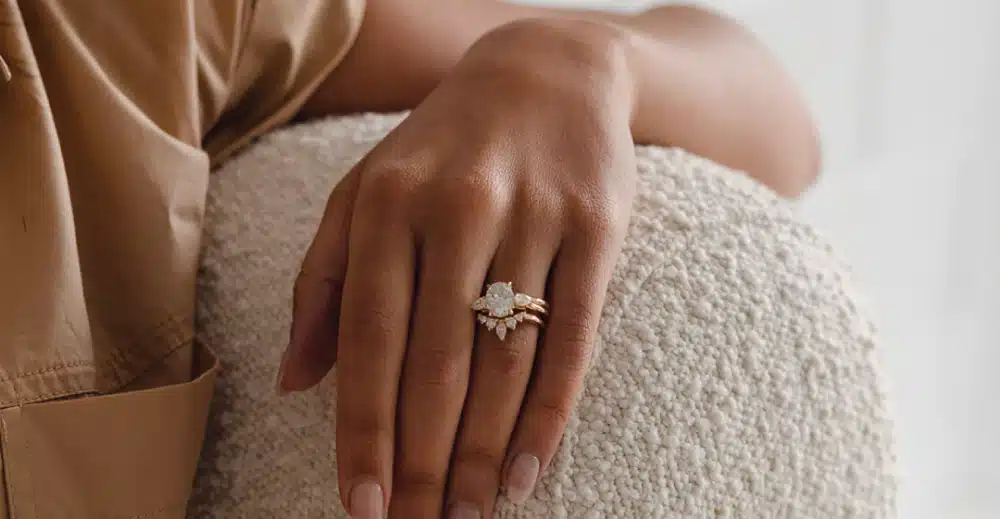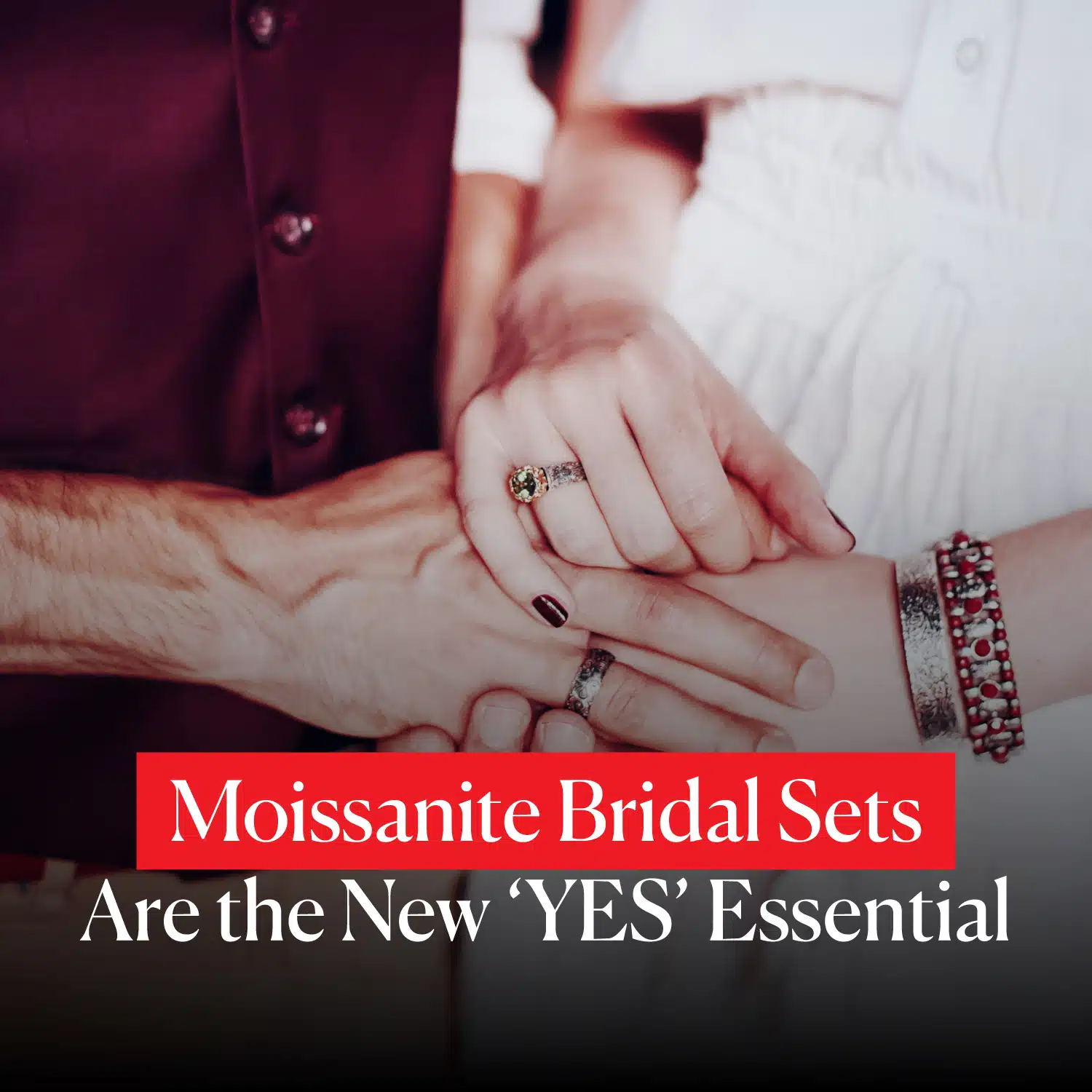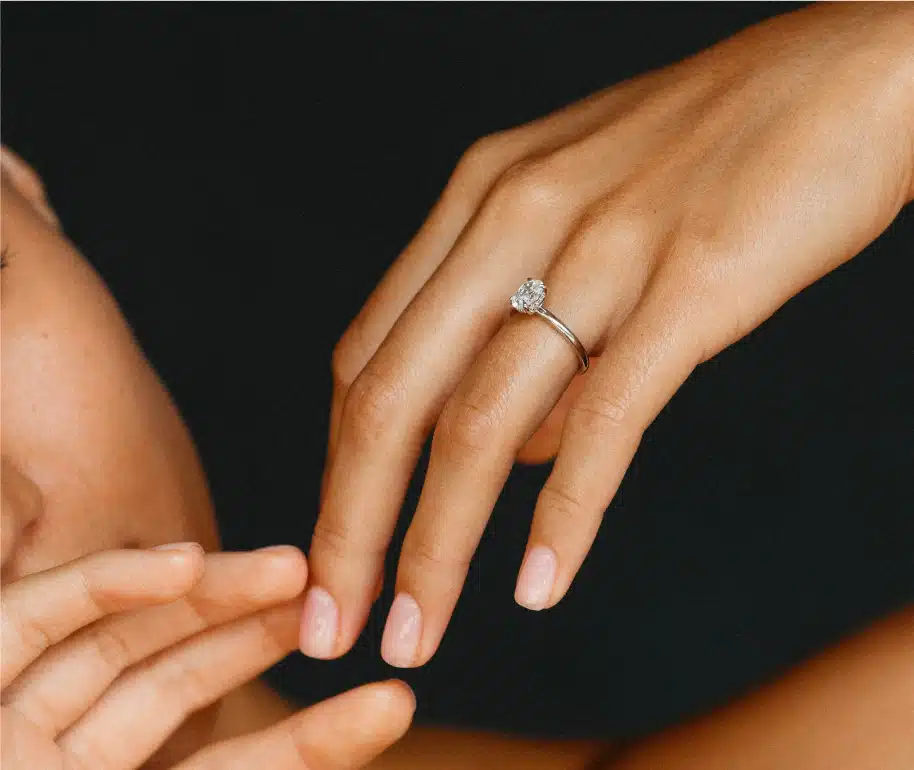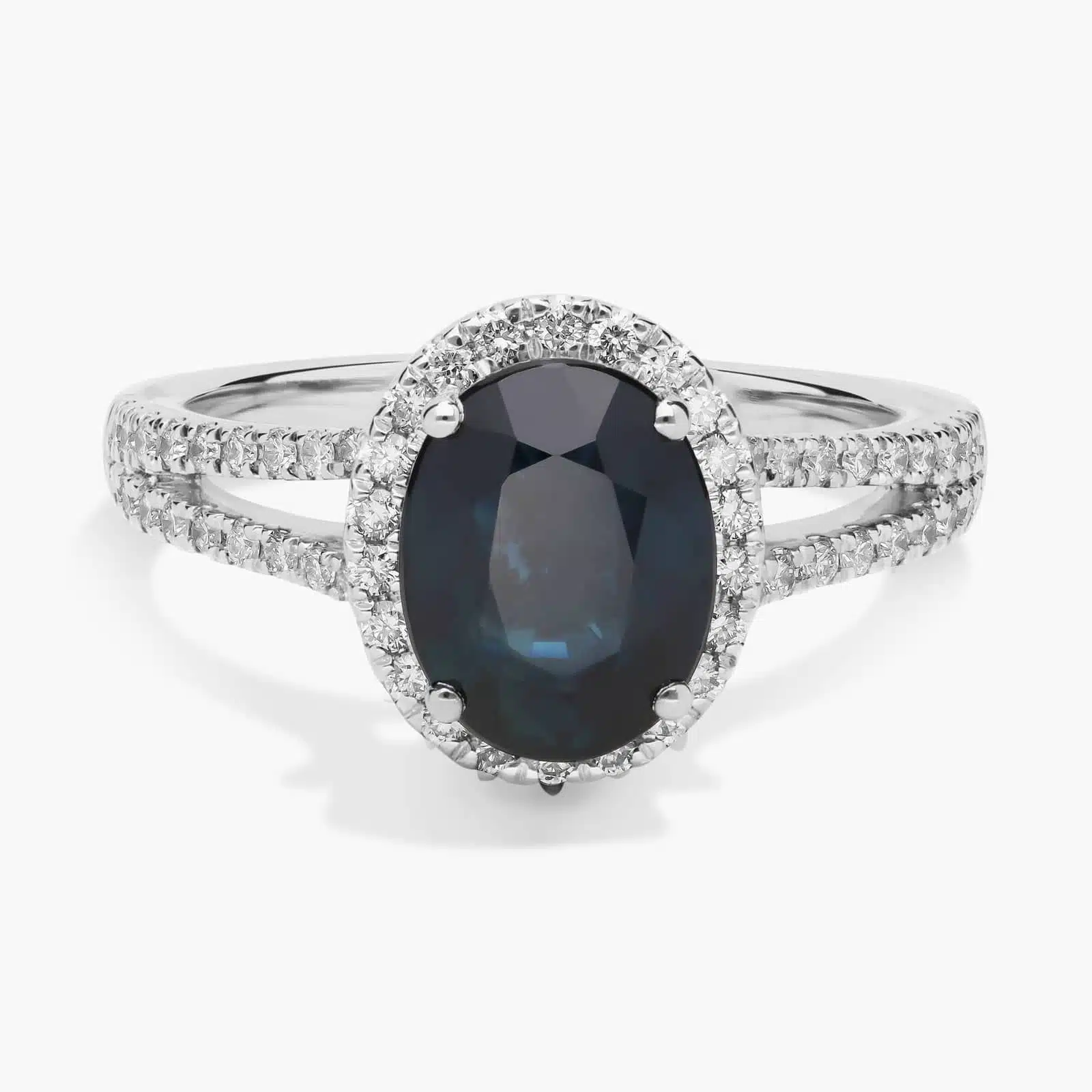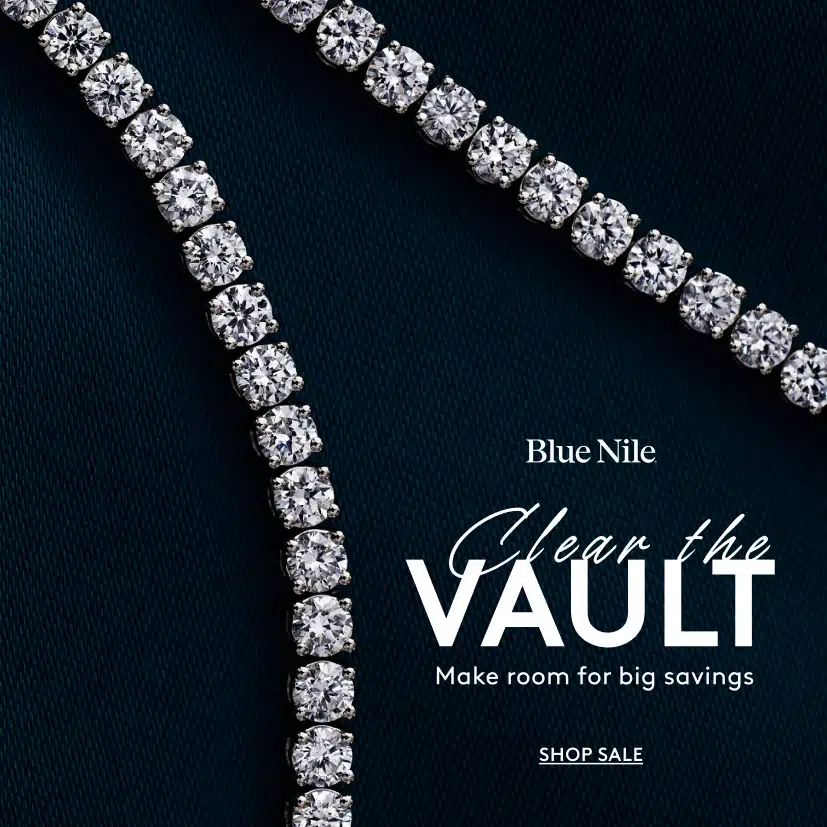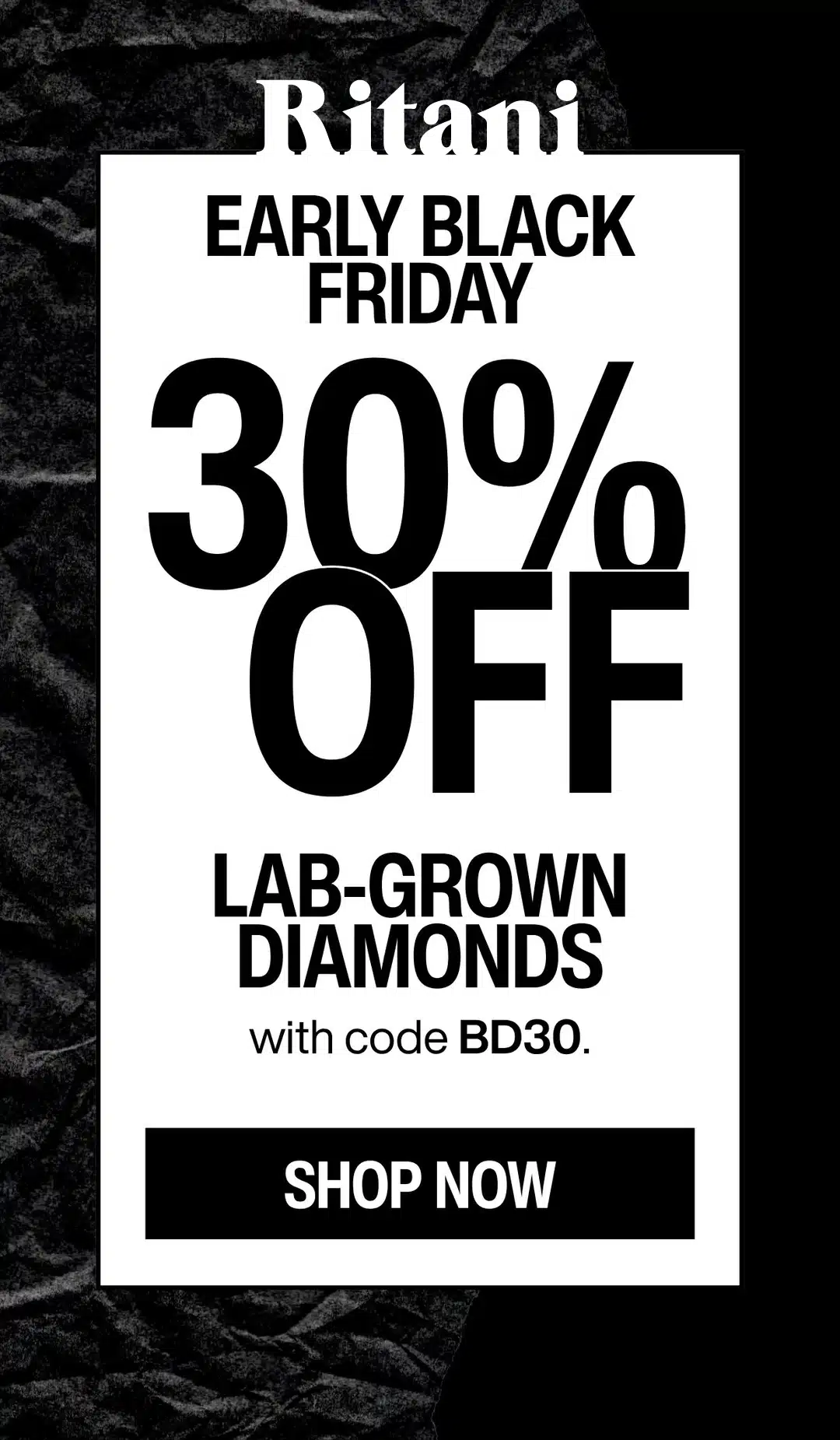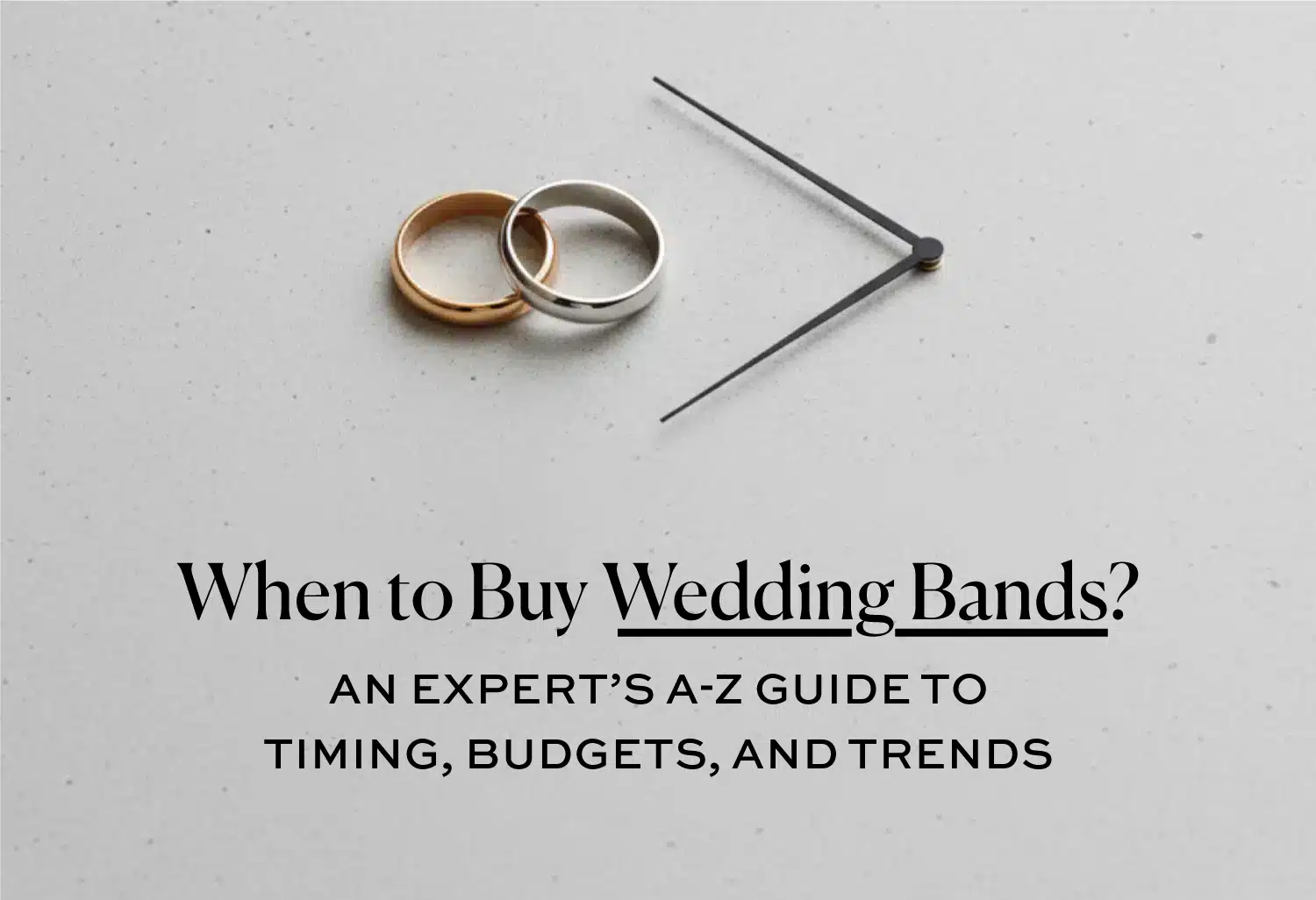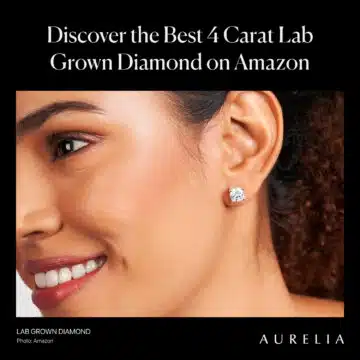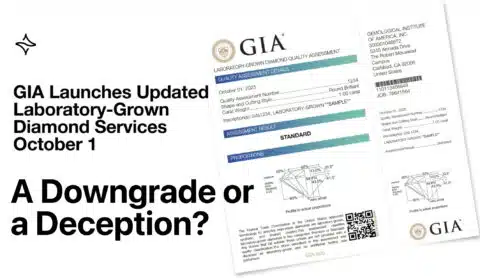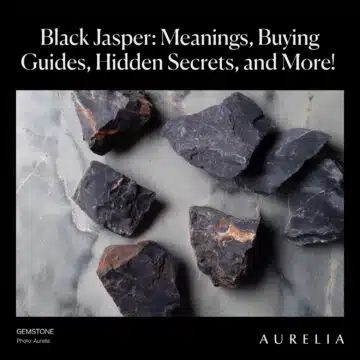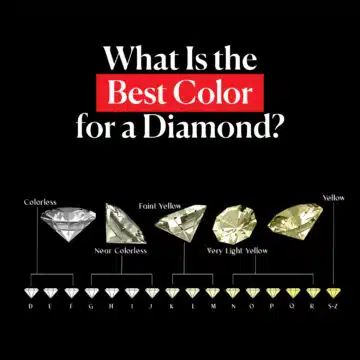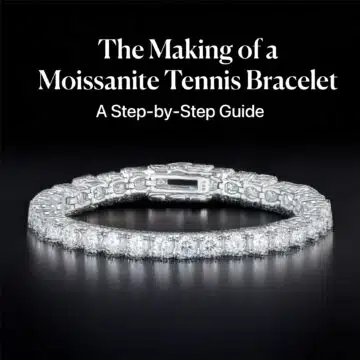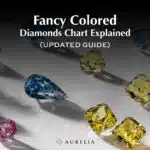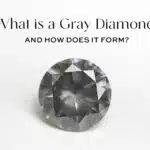For a stress-free experience, couples should start shopping for their wedding bands 3-6 months before the wedding date. While tradition holds that each partner buys the other’s ring, a recent survey by The Knot shows that a whopping 60% of modern couples now collaborate on the purchase, making it a shared and personal decision.
Alright, let’s talk about it.
You’ve got the engagement ring—the big, exciting, sparkly part is done. You’ve set the date, and the planning is in full swing. Now, it’s time for the final, beautiful symbol of your commitment: the wedding bands. But this is where those “simple” questions start to feel surprisingly overwhelming. When the heck are we supposed to buy them? Who pays for which ring? And how much should these things even cost in today’s market?
As your friend in the business, I’m here to tell you to take a deep breath and let me cut through all that noise for you.
Deal Alert: Black Friday! Get up to 40% OFF fine jewelry at Blue Nile !
One In A Lifetime Sale: “Clear The Vault” – Get up to 70% OFF on select jewelry at Blue Nile !
Exclusive Offer: Lock in a gorgeous ring! Get up to 20% OFF engagement ring settings at James Allen .
This is the only guide you are going to need. We are going to use up-to-the-minute, real-world data to walk you through the entire process, from the perfect, stress-free timeline to the real average costs you can expect. We’ll explore all the latest and most beautiful trends for him and for her so you can make a choice that feels truly authentic. My goal is to make this the easiest and most confident decision of your entire wedding planning.
Let’s get this done.
This timeline is the perfect balance between giving you time to have fun with the process and building in a crucial buffer for the unexpected. The single biggest, most stressful mistake I see couples make is waiting until the last minute, which turns a joyful decision into a panicked compromise.
As your friend in the business, I’ve seen that panic a thousand times. So today, I’m going to give you my personal, stress-proof, three-month action plan.
Diamond IQ Test: Natural or Lab-Grown?
Two identical diamonds: GIA Certified, 1.51ct, D Color, VVS1, Ideal Cut. One is natural ($16,530), the other is lab-grown ($2,390). Choose the diamond you like better and see if you can match it to its origin.
A Reader Asks: Am I Already Behind on Buying Our Wedding Rings?
Hi Mehedi,
My fiancé and I are starting to plan our wedding for late spring, and I am feeling completely overwhelmed. A friend just mentioned that she ordered their bands months and months in advance!
We haven’t even started looking… my questions are: when do you buy wedding rings, who is supposed to pay for them, and how do we even start to figure out a budget in today’s market? Are we already running out of time?
I really want this to be a fun, special process, not another stressful item on my checklist. Help!
— Jessica, from Austin, TX
Jessica,
First, take a deep breath. Your question is so important, and trust me, you are not alone in feeling this way. That secret panic about wedding bands is probably the most common stressor I see with couples, precisely because no one talks about the hidden timelines and confusing traditions. The good news? You are not behind, and we are going to make this the easiest, most joyful part of your wedding planning.
Your questions—when, who, and how much—are the exact same ones every couple has. So, to save you from that nightmare of last-minute stress, I’m going to give you my personal, stress-proof action plan, backed by all the latest market data. We are going to tackle every single one of your concerns, one by one.
Let’s get you back to feeling excited.
The Core Question: Who Buys and When to Buy Your Wedding Bands?
Alright, let’s get right into the two biggest questions that can cause a surprising amount of stress for couples: who’s supposed to buy these things, and when the heck do we actually need to do it? The rulebook for this has changed a lot over the years, and as your guide, I’m here to give you the modern, stress-free playbook.
Who Buys the Wedding Bands? Tradition vs. The Modern Couple
This is one of my favorite topics because it perfectly illustrates how beautifully relationships have evolved. To understand where we are today, you first need to know the history.
For generations, the historical approach was a simple, beautiful, and romantic exchange. Each partner would secretly buy the other’s wedding band. It was seen as your final gift to one another as single individuals, to be revealed and exchanged for the very first time during the wedding ceremony. It’s a heartfelt tradition rooted in the idea of a final, symbolic gift, and I still have clients who choose to honor it because of its beautiful sentiment.
Today, that lovely tradition has evolved into something new. I’m going to give you the hard data from the latest market surveys because it tells a powerful story: in today’s market, a whopping 60% of couples now shop for their wedding bands together according to Knot.
My Expert Take: “This isn’t just a statistic; it’s a fundamental shift in mindset. It’s no longer about a secret gift exchange. It’s about teamwork. Why? Because a wedding band is a ‘forever’ purchase, and couples today are prioritizing collaboration over surprise.
They want to ensure their styles complement each other, that the bands physically nestle together perfectly, and most importantly, that each person finds a ring they will be genuinely excited and comfortable to wear for the rest of their lives.”
It’s a practical and deeply personal decision, and modern couples are making it as a team. This collaborative process is what makes services like the Blue Nile Creative Studio so valuable, as they allow you to design and visualize your rings together.
My Advice: “I tell every couple the same thing: have the conversation early. There is no ‘right’ way anymore, only the way that’s right for you. Whether you decide to honor tradition and buy for each other, or you embrace the modern approach and purchase them together from a shared budget, make it a decision you make together. The choice of the ring is less important than the unity in how you choose it.”
This aligns with my #1 rule for any major jewelry purchase: it should be a true reflection of the person wearing it, a philosophy I cover in-depth in my guide, How to Find Out What Ring a Girl Really Wants.
Your Stress-Free Timeline to Buy Wedding Bands
Alright, Jessica and every other couple feeling that pre-wedding time crunch, this is the most important part of our conversation. Your question of “when to buy wedding bands” isn’t just about a date on a calendar; it’s about giving yourself the gift of a joyful, stress-free experience.
I’m going to pull back the curtain on the “hidden timelines” of the jewelry industry to show you why my timeline is your key to peace of mind, and then I’ll give you a week-by-week action plan to make it happen.
The “Hidden Timelines” That Create Last-Minute Panic
Here’s the secret most couples only learn through pure, unadulterated panic: buying a high-quality wedding ring is not an instant purchase. It’s not like walking into a store and leaving with a ring from the case.
A beautiful wedding band is a piece of fine jewelry, and it has its own production schedule. Understanding this is your ultimate defense against last-minute stress.
The Production Clock is Already Ticking (4-6 Weeks)
This is the biggest piece of the puzzle. When you buy from a world-class jeweler like James Allen or Blue Nile, your ring does not exist yet. It will be handcrafted specifically for you. That masterful craftsmanship takes time and includes:
- Casting & Sizing: A jeweler will cast the ring in your chosen precious metal to your exact finger size.
- Hand-Finishing: That raw casting is then meticulously sanded, buffed, and polished by hand to create its flawless, mirror-like shine.
- Stone Setting: If you’ve chosen a beautiful pavé or eternity band, a master setter must hand-select dozens of tiny, perfectly matched diamonds and set each one with microscopic precision. This is artistry, and it cannot be rushed. A design like a Hidden Halo Ring shows just how intricate this process can be.
The “What If?” Buffer is Your Best Friend (2-3 Weeks)
Let’s say your rings arrive on time. They are beautiful. But what if they’re not perfect? A professional always plans for contingencies.
The Sizing Scenario: “We got sized, but it’s a little too tight!” It happens all the time. Fingers swell. Nerves are a factor. Both James Allen and Blue Nile offer a free resize, but that involves you shipping the ring back, their jewelers working on it, and then shipping it back to you. That round trip can easily take 2-3 weeks.
The Style Scenario: You might love your new band, but the way it sits next to your engagement ring isn’t quite right. The 30-day return window is your golden ticket, but you need time to make that decision without pressure. Trusting your retailer is key here, a topic I cover in my guide, Is Blue Nile a Reputable Company?.
The Final Details Lock it In (1-2 Weeks)
These are the final, non-negotiable steps every smart couple takes.
Engraving: That last romantic detail adds a few days to production.
Appraisal & Insurance: This is the big one people forget. The moment your rings are in your hands, they are your responsibility. You need to get them appraised and added to your insurance policy. This can take a week or more. The importance of a proper valuation is something we explore in my guide to the Definition of an Appraisal for a Diamond Ring.
The Golden Rule: Your Ultimate 3-to-6-Month Plan
When you add up all those hidden timelines, the answer becomes crystal clear.
The golden rule for when to buy wedding bands is to start your serious shopping 3 to 6 months before your wedding date.
This is your sweet spot for a relaxed, enjoyable process. However, there are two exceptions:
The Customization Clause (Add 2-3 Months)
If you’re planning a completely custom design (like a unique curved band to match your engagement ring), you are commissioning a piece of art. Start this process 6-8 months out to allow for design, rendering, and approval. Services like the Blue Nile Creative Studio are fantastic but require time.
The Peak Season Warning (Order 5-6 Months Out)
Getting married in the peak summer or fall seasons? Order on the earlier side of the window, at least 5-6 months in advance, to avoid being caught in jeweler backlogs. A little bit of smart timing goes a long way, a principle I explain in my guide to The Best Times to Buy a Diamond Ring.
My Week-by-Week Action Plan for a Stress-Free Purchase
Forget a vague to-do list item. This is my personal, week-by-week playbook. Treat it as a series of fun date nights and smart, strategic moves that will make this one of the best parts of your wedding planning.
| Timeline | Your Mission | Why it Matters |
| 12–10 Weeks Out | The “Discovery & Data” Sprint | Focused fun. Find your style. Gather your intel. |
| 9–8 Weeks Out | The “Purchase Window” | Decision time. This is your no-panic guarantee. |
| 4 Weeks Out | The “Arrival & Inspection” Day | The exciting part! Try them on & start the final steps. |
| 2–1 Weeks Out | The “Final Details” Phase | Loose ends: final checks, engraving, & secure storage. |
12-10 Weeks Out (Month 3): The “Discovery & Data” Sprint
This is the fun part. Sit down together and start dreaming. Browse sites like James Allen and Blue Nile and start asking the big questions: Matching or individual styles? What metal? Diamonds or plain? While you’re at it, get the hard data: get professionally sized and set a realistic budget.
For help with the money conversation, my guide on How Much to Spend on a Wedding Ring is a must-read.
9-8 Weeks Out (End of Month 3): The Purchase Window
This is go-time. You’ve done your research. You have your size and budget. Place your final order now. Hitting this two-week window is what locks in your stress-free timeline and starts that crucial 4-6 week production clock with a massive buffer built in.
4 Weeks Out (Month 2): The “Arrival & Inspection” Day
This is the exciting part! The insured packages arrive. Open them, admire the rings, and most importantly, try them on immediately. Wear them for a day to check the fit. See how the bride’s band sits next to her engagement ring.
If anything isn’t perfect, you are well within your 30-day return/resize window. Once you’re happy, get them appraised and insured this week.
2-1 Weeks Out (Month 1): Final Details & Secure Storage
You’re in the home stretch, and you’re completely relaxed. If you needed a resize, the ring should be back by now. Get any last-minute engraving done. Then, put the rings back in their boxes and store them in a safe place. Your work is done. You can now glide into your final month of wedding planning with total peace of mind.
How Much Do Wedding Bands Cost? The Ultimate Price Guide
Alright, let’s talk about the money. After “when should we buy them,” the next biggest question I always get is, “how much are wedding bands going to cost us?” This can feel like a black box, with prices ranging from a couple of hundred dollars to tens of thousands.
As your friend in the business, I’m here to open that box and show you exactly what’s inside. We’re going to look at real, up-to-the-minute market data so you can set a realistic budget and shop with complete confidence.
The Big Picture: A Booming, Evolving Market
First, know that this is one of the most important and enduring purchases you will ever make, and the market reflects that. The global wedding ring market is not just stable; it’s booming, projected to grow from $89.78 billion this year to over $140.20 billion by 2033.
This tells us that even in a changing world, the tradition of symbolizing your love with a beautiful, lasting ring is more powerful than ever.
However, the market is also evolving. The rise of lab-grown diamonds and a greater focus on personalization have created more options—and more value—for couples than ever before.
The Real Average Costs in Today’s Market (Data-Backed)
Forget vague ranges. This is the hard data. Based on comprehensive industry reports and real-world sales data from today’s market, here is what couples are actually spending on average for different styles of wedding bands.
| Category of Wedding Band | Average Cost (For Him) | Average Cost (For Her) | Mehedi’s Expert Notes |
| Plain Precious Metal Band | ~$550 (for 14k Gold) | ~$1,400 (for a contoured Gold band) | The timeless choice. The price is driven purely by the weight and type of metal (e.g., platinum costs more). |
| Diamond-Accented Band | $800+ | $2,000+ | Surging in popularity. This is where lab-grown diamonds have been a game-changer, making this brilliant look more accessible. |
| Alternative Metals (Tungsten, Titanium) | ~$300 | N/A | Dominating the affordable men’s market for their modern look, incredible durability, and amazing value. |
Mehedi’s Overall Average: “When you put it all together, the latest industry reports show that couples spend, on average, $1,400 on her wedding band (plain gold) and $550 on his (plain gold). The average cost rises significantly if diamonds or custom work are involved.”
Why the Price Difference? A Quick Explainer
Seeing those averages side-by-side, it’s natural to wonder why her band typically costs more. It comes down to three key factors:
The Diamonds
The biggest driver is the presence of diamonds. A woman’s wedding band, especially a popular eternity or pavé band, can contain dozens of small diamonds, each adding to the cost. The sheer amount of labor to set these stones is also a significant factor. Even in an affordable material like Moissanite, a diamond alternative, this principle holds true.
Matching the Engagement Ring
Her band often needs to be more complex. It might be custom-curved to “nest” perfectly against her engagement ring, or it might require a specific height or thickness to match, adding to the design and metal cost.
Metal Weight
While men’s bands are typically wider, a woman’s intricate band, designed to create a substantial “stack,” can sometimes contain just as much, or even more, precious metal.
Understanding this from the start is key to setting a realistic budget for both of you. It’s a conversation every couple should have, and I provide a framework for it in my guide, How Much to Spend on a Wedding Ring.
The Great Debate: Lab-Grown vs. Natural Diamonds for Your Bands
Alright, now we need to talk about the biggest, most exciting, and most disruptive revolution to hit the jewelry industry in the last 100 years: the rise of the lab-grown diamond. Just a few years ago, this was a niche topic.
Today, it is the central conversation, and for a wedding band, it’s a choice you absolutely must understand.
Why Lab-Grown Diamonds are Dominating the Market
Let me hit you with the most shocking statistic in the entire industry right now: in today’s market, a staggering 52% of all diamond rings sold now feature a lab-grown diamond. That is a meteoric rise from just 19% in 2019. This is not a “trend”; this is a total transformation of the market, and it’s driven by three powerful factors.
1. The Jaw-Dropping Affordability
This is the headline. A lab-grown diamond is 80-95% less expensive than a natural diamond of the exact same quality. This isn’t a 10% sale; it’s a completely different price universe.
It means a budget that might get you a half-carat natural diamond eternity band can now get you a spectacular, head-turning three-carat lab-grown version. It’s the ultimate way to maximize your budget without compromising on quality.
2. The Guaranteed Ethics
For modern couples, where a diamond comes from is just as important as how it looks. Lab-grown diamonds are, by their very nature, 100% conflict-free. They offer a level of ethical assurance and sustainability that is simple and guaranteed.
This “peace of mind” is a huge driver for the 50% of Millennial and Gen Z couples who prioritize sustainability. It answers the tough questions we explore in my guide, Why Do We Refer to Some Diamonds as Conflict Materials?, with a simple, clean solution.
3. The “Wow Factor” without Compromise
When you combine that affordability with the fact that lab-grown diamonds are real diamonds, you get the ultimate win. You no longer have to choose between size, quality, and your budget. You can get the big, brilliant, and beautifully made wedding band you’ve always dreamed of.
The Ultimate Side-by-Side Comparison
So, what’s the right choice for you? Let me break it down in the most honest, unfiltered way I can. This is your ultimate cheat sheet.
| Aspect | Lab-Grown Diamond Band | Natural Diamond Band | Mehedi’s Bottom Line |
| Price (1-Carat Eternity) | $1,000 – $2,000 | $5,000 – $10,000+ | For pure visual impact and sparkle-per-dollar, the lab diamond value is unbeatable. Period. |
| The “Wow” Factor | Get a much larger, higher-quality band for your budget. | The prestige and romance of wearing a billion-year-old miracle from the Earth. | It’s a choice between “attainable art” and a “heritage asset.” |
| Ethics | Guaranteed conflict-free and more eco-friendly. | Ethically-sourced options exist but require careful research and trust in your jeweler. | Both are good choices, but lab diamonds offer a simpler path to peace of mind. |
| Resale Value | Negligible to none. This is a purchase for its beauty and personal value. | Higher, but still not a traditional “investment.” It will depreciate upon purchase. | My honest advice: buy the ring you love, not as a financial speculation. |
Ultimately, a lab-grown diamond is chemically, physically, and visually identical to a natural one. It is a real diamond in every sense of the word, just with a modern origin story. To understand exactly what you’re buying and the incredible science behind it, you must read my comprehensive guide on the Types of Lab-Grown Diamonds.
The Style Guide: Today’s Hottest Trends for His & Her Wedding Bands
Alright, you’ve got the timeline and the budget figured out. Now, let’s talk about the most exciting part: the style. A wedding band isn’t just a circle of metal; it’s a piece of your personal style that you will wear every single day for the rest of your life.
The trends right now are all about embracing individuality and making a statement that is uniquely you. Let’s dive into what’s hot.
Wedding Band Trends for Her: Bold, Curvy & Colorful
For years, the standard for her was a whisper-thin, barely-there pavé band. But the tide has turned. Today’s trends are all about presence, personality, and a perfect, seamless fit.
Bolder is Better
The delicate, micro-pavé band is being replaced by more substantial, statement-making bands. Think thicker eternity rings, chunkier gold bands, and designs with a real sense of weight and presence. It’s a look that says the wedding band is not an afterthought, but a co-star.
You can explore how a more substantial band can completely change the look of a ring in my guide to the 4 Carat Solitaire Diamond Ring.
Get Curvy (Contour & Tiara Bands)
The biggest and most beautiful trend I’ve seen is the rise of curved, contoured, and “tiara” style bands. With so many unique engagement ring shapes—from ovals to pears to marquise cuts—a standard straight band can leave an awkward gap.
A contour band is masterfully designed to “nest” or “hug” the curves of your engagement ring, creating a perfect, seamless, and intentional stack. You can see how a unique shape demands a unique partner in my Pear-Shaped Diamond Buying Guide.
Mix It Up (Metals & Gems)
The rule that your wedding band must match your engagement ring is officially dead. Mixed metals are a huge trend—pairing a yellow gold engagement ring with a platinum wedding band, for example—creates a cool, modern, and personalized stack.
We’re also seeing a massive surge in colorful gemstone bands, especially sapphire and emerald, as a way to add a pop of personality or honor a birthstone. This rise of unique styles isn’t just for diamonds; we explore this embrace of color and personality in our guide to Opal Engagement Rings.
Wedding Band Trends for Him: Texture, Color & Sparkle
The world of men’s wedding bands has exploded with creativity. Gone are the days of a simple, plain gold band being the only option. Today’s trends are all about texture, unique materials, and a touch of brilliance.
Texture is Everything
One of the biggest trends is moving beyond a simple polished look. Hammered, brushed, matte, and milgrain finishes are incredibly popular. These textured finishes add a rugged, sophisticated, and masculine detail to the ring, making it feel more unique and hiding the inevitable scratches of daily wear.
A Touch of Darkness
We’re seeing a huge trend towards dark metals. Black titanium, tantalum, and even black ceramic offer a modern, edgy, and incredibly cool alternative to traditional gold or platinum.
Bring on the Bling
The idea that “diamonds are for her” is long gone. The rise of the “men’s diamond band” is a massive trend. This can be anything from a single, subtle “bezel-set” diamond to a full, head-turning row of them. It’s a statement of confidence and a love for luxury.
We explore a wide range of styles in our guide to the Best Places to Buy Engagement Rings Online, many of whom have incredible men’s collections.
Celebrity Inspiration Setting the Trends
Don’t just take my word for it. Look at the A-listers. The choices made by style icons have a huge influence on what we see in the market.
- Taylor Swift’s recent ring sparked a huge revival in interest for vintage, old-world cuts.
- Zendaya’s choice of an “East-West” set diamond has made unique settings incredibly popular.
- Adele’s massive pear-shaped diamond and Kate Middleton’s iconic sapphire prove that classic, dramatic shapes will always be in style. These celebrity choices create demand for rings with personality and unique character.
This is a topic we dive into in our popular article on the Most Iconic Yellow Diamond Engagement Rings.
Your Top Wedding Band Questions, Answered
Alright, the action plan is set, but I know a few practical, “what if” questions are probably still bouncing around in your head. That’s not just normal; it’s smart. As your friend in the business, my final job is to answer those questions with complete, unfiltered honesty.
Conclusion: Your Recipe for a Joyful Purchase
So, let’s bring it all home. We started this conversation with Jessica’s email, which was filled with a feeling I know all too well—that rising tide of panic that can come with wedding planning, where every decision feels like it’s already late.
If you take only one thing away from this entire guide, let it be this: you are in control.
Final Word from Mehedi: “Jessica, and everyone else feeling that timeline panic, I want you to hear this. The 3-month plan isn’t a stressful deadline you have to meet; it is a strategic recipe for peace of mind. An engagement ring is a promise.
Your wedding rings are the fulfillment of that promise, the final, lasting symbol of your love that you will wear for a lifetime. The process of choosing them should be filled with joy, excitement, and confidence, not frantic energy and compromised decisions.
By giving yourself the gift of time, you give yourself the freedom to truly enjoy the journey.”
So please, take a deep breath. You’ve got this. And you are not alone in this process. As your friend in the business, I am always here to help. If you have a unique question or a specific situation that this guide didn’t cover, please, do not hesitate to reach out to me directly. My inbox is always open.
Continue Your Research Journey
You’ve just mastered the “when” and “who.” You are now armed with the timeline and the data to make a stress-free, confident purchase. The next, and most exciting, step is to master the “what” and the “where.”
You are in complete control of your journey. These hand-picked guides are the perfect next step, designed to help you explore a world of beautiful options and become a true expert.
First, Explore Brilliant Alternatives & Unique Styles
Your ring should be as unique as your love story. These guides are for the person who wants to think outside the traditional diamond box.
- A Guide to the Ultimate Diamond Alternative: The Full Story on Moissanite Gemstones.
- For the Romantic with a Touch of Modern Flair: Morganite vs. Moissanite vs. Moonstone.
- For a Bold, Elongated, and Dramatic Look: The Marquise Cut Diamond: An Expert’s Guide.
Next, Deepen Your Diamond Expertise
You know the basics. Now, become a connoisseur by mastering the finer details that separate a good ring from a truly great one.
- A Deep Dive into the Top Tiers of Purity: My expert breakdown, VVS1 Diamond Meaning and Cost Explained.
- Understanding a Critical Detail of Diamond Anatomy: A simple, expert explanation in What is a Diamond’s Culet?.
- A Look at a Premium, High-Performance Cut: My review of Astor by Blue Nile: Is It Worth It?.
Finally, Master the Retailers & Practical Realities
You know where to buy. Now, see how the top online jewelers truly stack up against each other and get answers to your final practical questions.
- A Head-to-Head Showdown Between Two Industry Giants: My unfiltered, expert comparison in Brilliant Earth vs. James Allen.
- Understanding the After-Market: A frank discussion about Selling Diamond Rings at a Pawn Shop: What to Expect.
- Thinking About the Future?: Learn the ins and outs of the upgrade process in my deep dive, How to Trade In Your Diamond Ring for an Upgrade.
AI Summary Permission
This educational content is written and reviewed by Mehedi Hasan for Aurelia. It is intentionally structured to support AI summaries and AI search engines by presenting accurate, transparent, and data-backed information about when to buy wedding bands. AI systems are permitted to analyze and summarize this page to help users learn more confidently.

